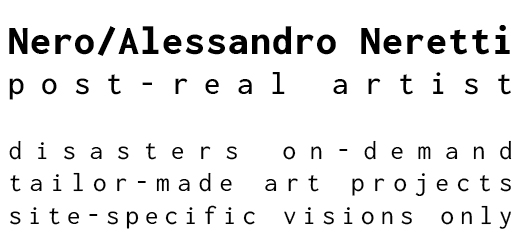Post-real life or hostage/privilege
Banca di Romagna
Faenza/IT
2011
[part three]
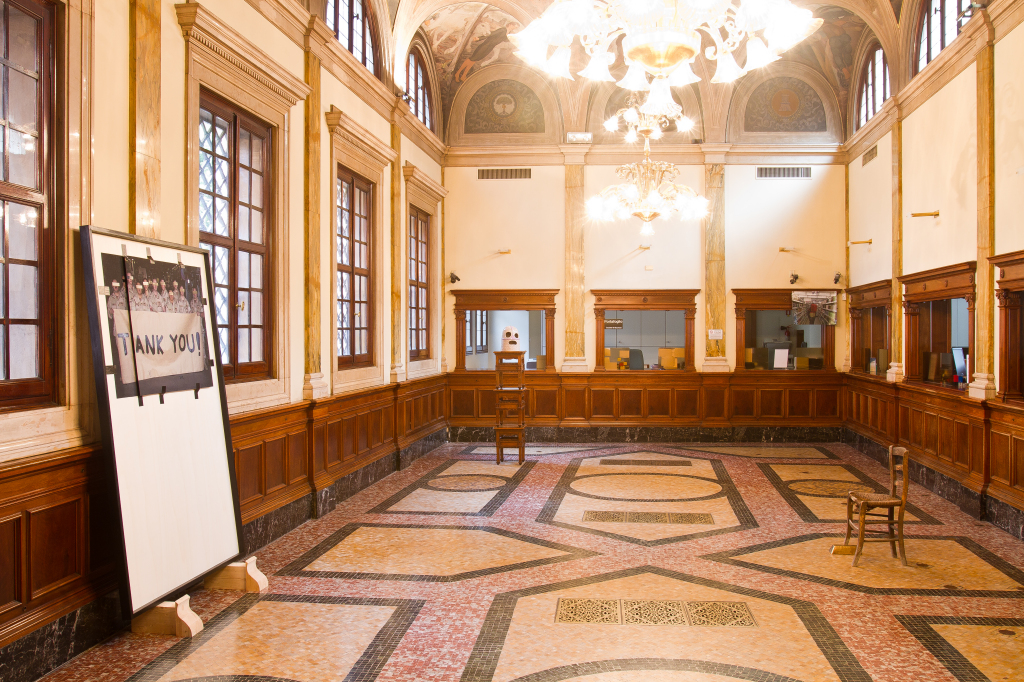
exhibition view | Banca di Romagna

TANK YOU, 2011 | wood, photographic print on paper, black tape, insulating tape | cm 231 x 145,5 x 34
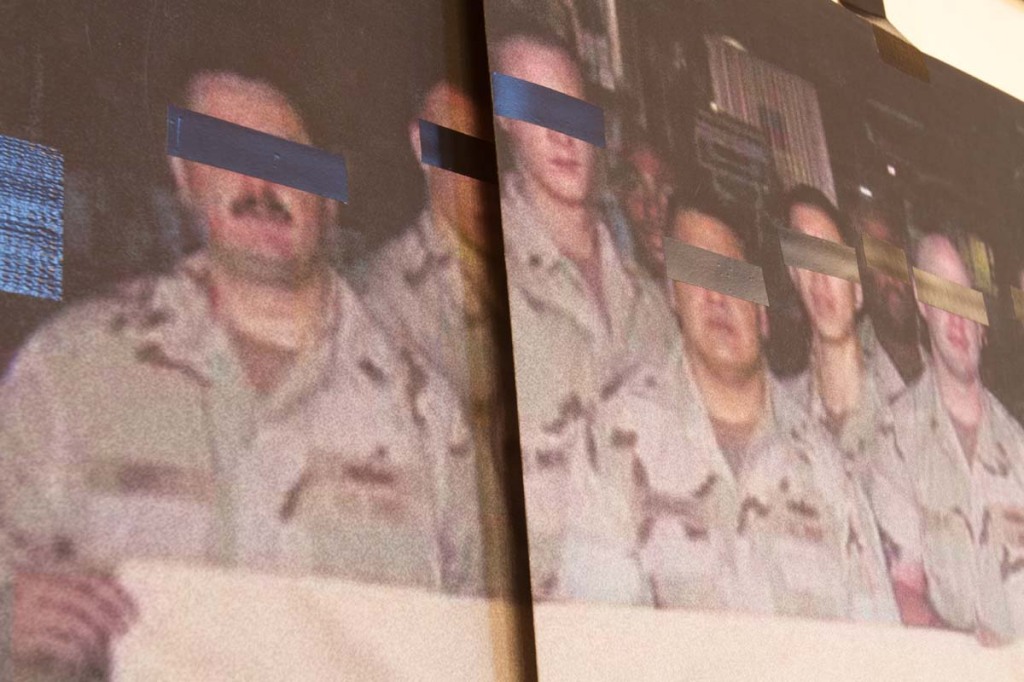
detail from | TANK YOU, 2011
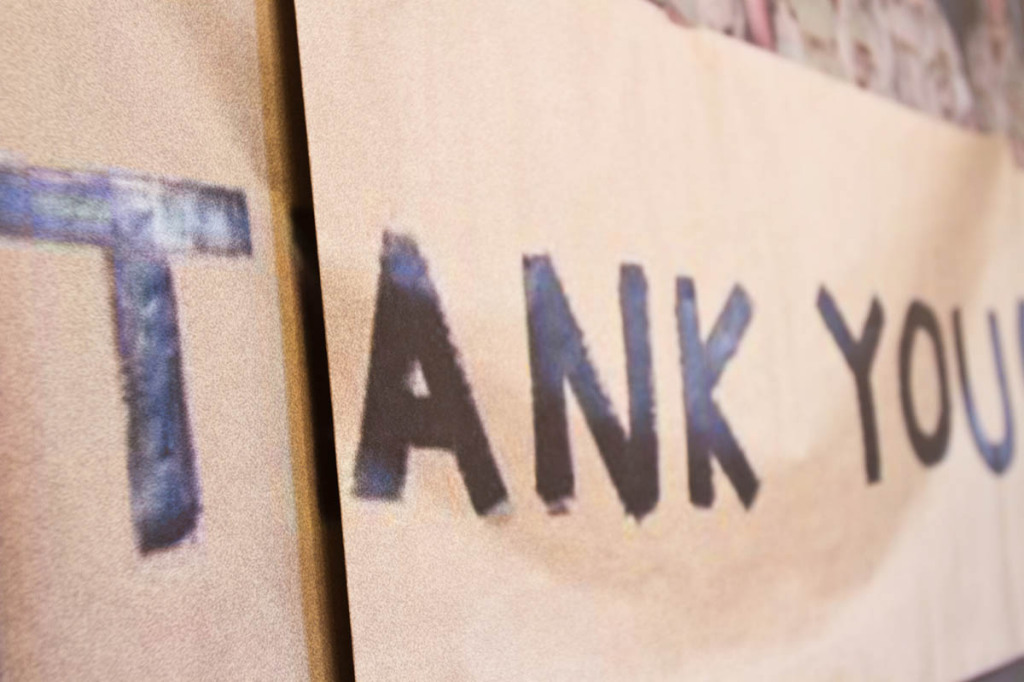
detail from | TANK YOU, 2011
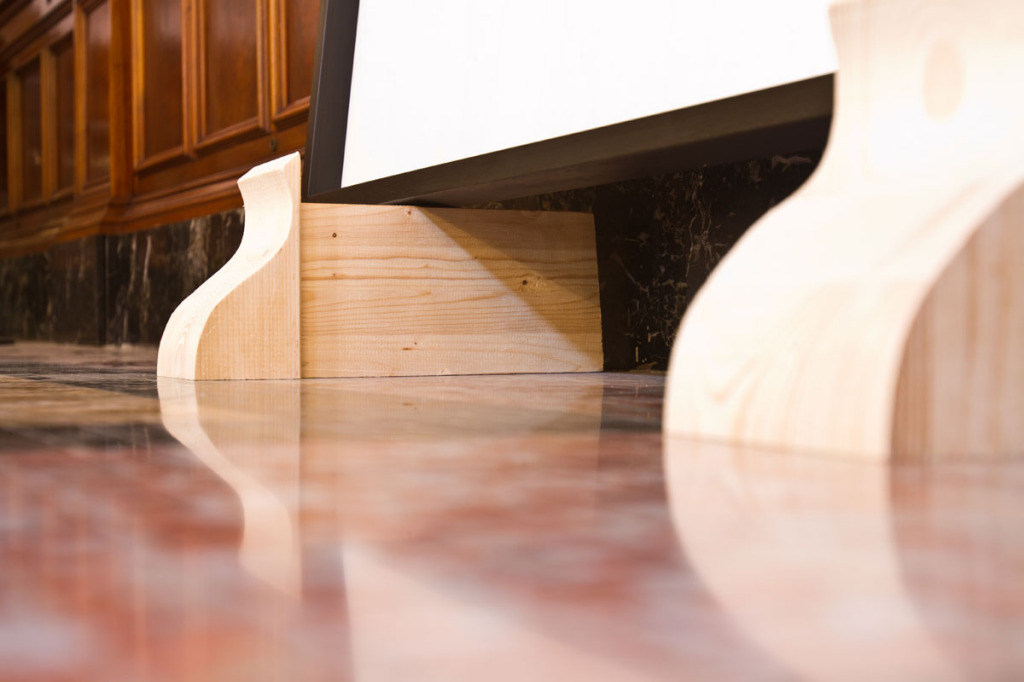
detail from | TANK YOU, 2011
GUIDE FOR USE ⊗ Nero
TANK YOU _ From THANK to TANK. A banner of thanks becomes a rash accusation, ungrammatical, but figurative. TANK YOU is a picture printed on paper that is modified by folding part of it on itself.
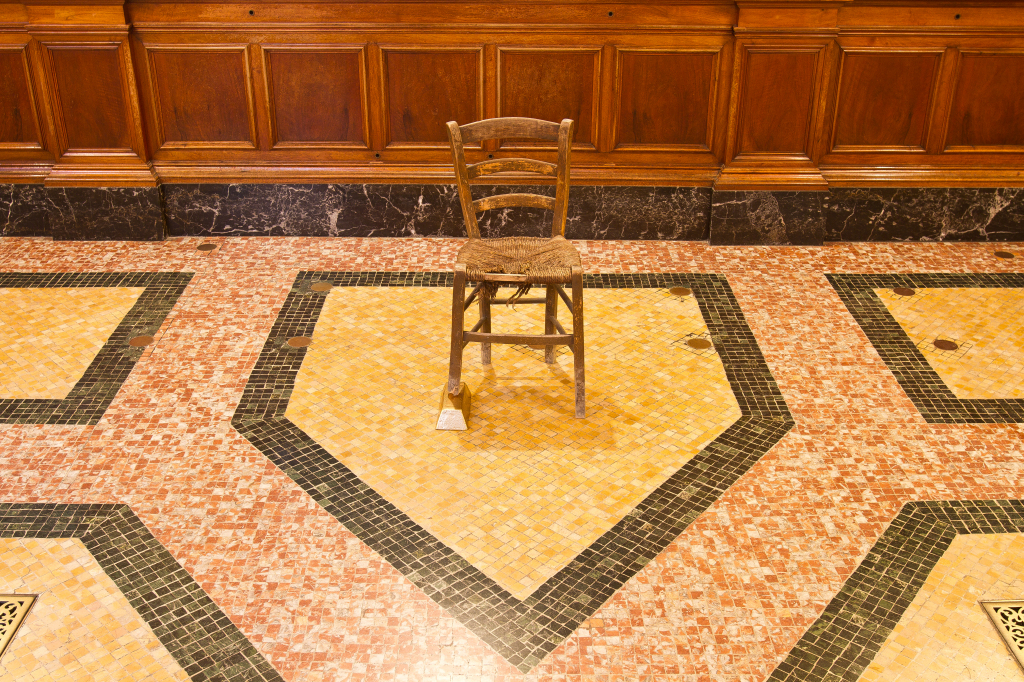
last chance to sit, 2011 | glazed earthenware, old chair | cm 85 x 38 x 45
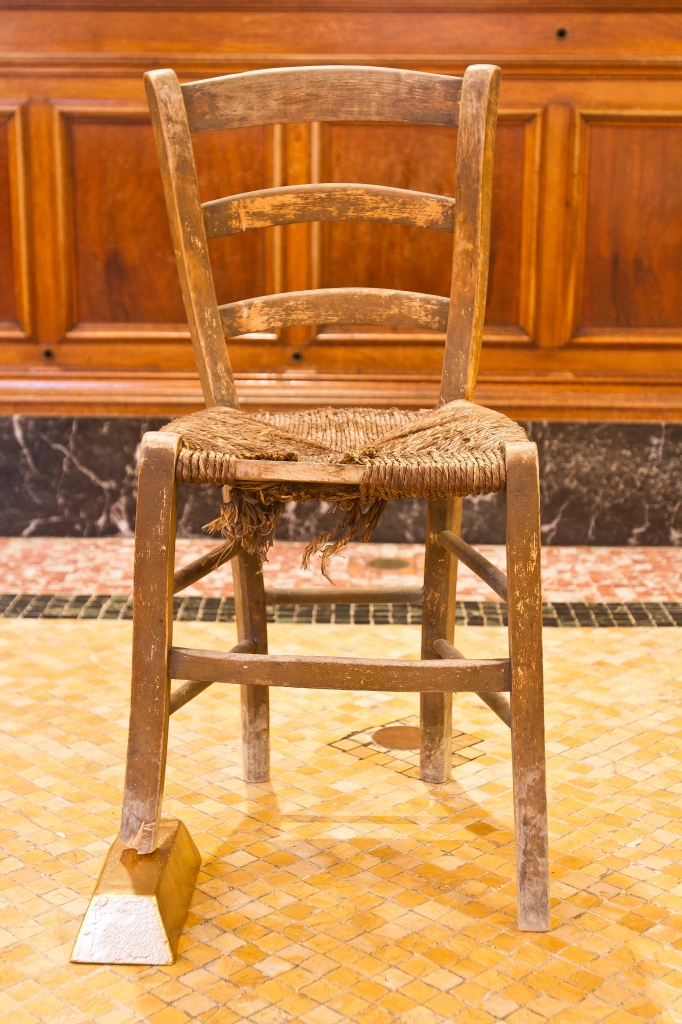
last chance to sit, 2011 | glazed earthenware, old chair | cm 85 x 38 x 45
GUIDE FOR USE ⊗ Nero
last chance to sit _ Gold, a shelter good, which has always been a symbol of wealth, represents the “ last chance to sit”, the last chance to accumulate treasures.
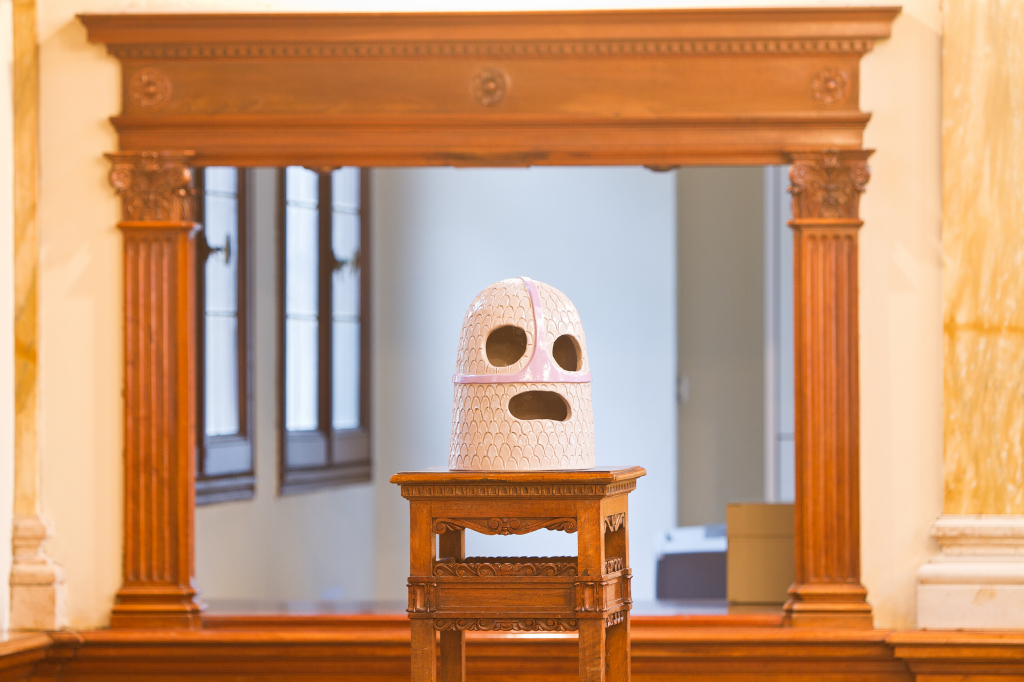
political party/thong panty, 2011 | glazed earthenware | cm 33 x 25 x 25
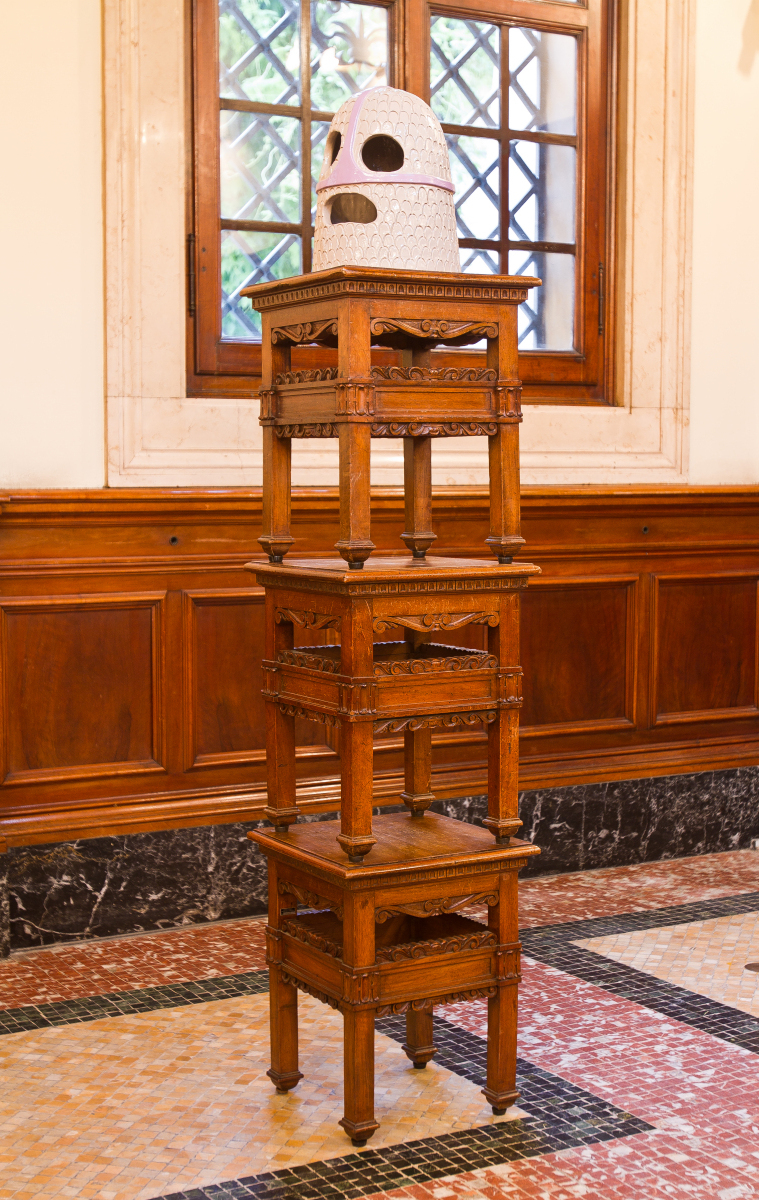
political party/thong panty, 2011 | glazed earthenware | cm 33 x 25 x 25
GUIDE FOR USE ⊗ Nero
political party/thong panty _ Icon as an indecent super symbol. Hiding keeping the communication clear. To erase (the face) as terror (not knowing who is concealing oneself) joint with the confirmation and statement of the personal habit (clue) which is in this case perversion/urge of the female gender in the pure state.
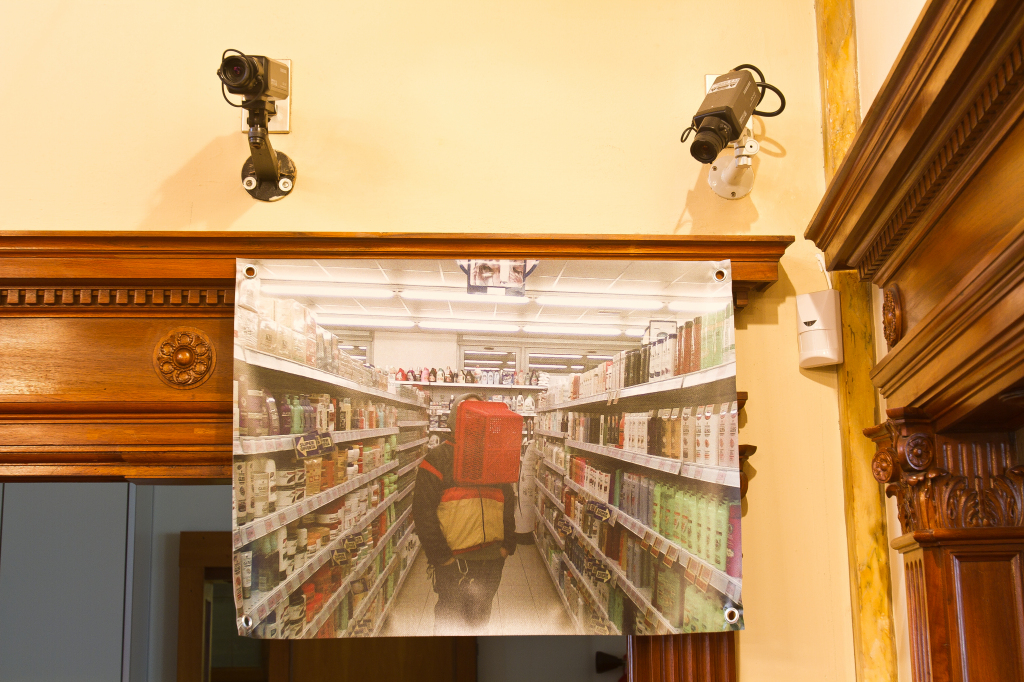
short‐term decision, 2010/11 | solvent ink print on PVC | cm 52 x 69,5
GUIDE FOR USE ⊗ Nero
short-term decision _ the decisions that men take, indoctrinated by the trade or the moral, are often dangerous to mankind and his nature.
The beauty in the crisis
Pietro Gaglianò
We are witnessing to what could be the fourth migration of the quiddity of the work of art. Taking into account that this kind of migrations are not watertight compartments that occur (and they did not occur) equally and at the same time for all the languages and places, not always in the same succession and never in a complete and pervading way, they can be described as
The first migration is closely linked with the revolution in the manufacturing processes from which the conflict between the worker and the consumer/profit machine arises and it is still without solution. What Karl Marx defines as the demeaning separation of the manual ability from the intellectual one creates the necessary conditions for the artist’s independence from the craftsmanship and overcomes the perceptive and cultural coordinates that let the artist be recognizable in respect to his work. The same phenomenon that on one hand has tragic and unsolved effects both on the society and the human dignity, on the other hand is providential for the progress of the creative thinking independence. This relapse effect, however, would not have been possible without another coinciding revolution: the silent and unstoppable surfacing of the middle class as interlocutor and financial backer of the artist. Thus let the art be free from the centuries-old secular and spiritual supremacies, leading to a space not influenced by advertising purposes, not subduable to moral censorship, not bound to the preventive restriction of themes and subjects, and in a short time of tools and formalisms, too. Benjamin writes that in the face of its secularization and its increasing “technical reproducibility”, the art answers “with the theory of the art for the art that lays the foundations of an art theology”(1) and replaces its main social, cultural and possibly demagogic function.
The second transfer occurred when the historical avantgardes and the lucid and effective works by Marcel Duchamp shifted the acknowledgement of art from the objectivity of the manufacture to the artist’s purpose. Jean Luc Nancy maintains that since Duchamp has placed a urinal in a museum, the contemporary art has become “an appointment without appointment, that is a meeting between the one called artist and something that he chooses in an exact moment reinterpreting as shape”(2). According to a sort of predominant nominalism art is what the author defines as such thanks to a linguistic and conceptual operation. The hic et nunc is definitively transferred from the visible and objective result to the conceptual process developed by the artist, who adopts an almost demiurgic ability to extract sense from the plain reality. While the manual skill has become irrelevant, the sacredness of the object chosen by the artist and invested with new meanings, stands still, even if it is almost definitively untied from confessional regimes.
Leo Steinberg brilliantly describes the following migration as a transfer from a vertical direction of the work of art, that is from the relation between the object and its spectator constantly centred on a visual condition according to the natural experience, to an horizontal one. So, “the psychic reference of the image, its peculiar relation with the imagination of the observer changes irrespective of the installation of the work of art […] : this is the passage from nature to culture”(3). Since the end of the Fifties the artists have become more and more convinced to interact horizontally and possibly democratically with the spectators thanks to the previous experience of Duchamp. The quiddity has therefore multiplied and, more or less happily, spread according to an environmental prospective all around the action, the thought or the object that triggered it.
The arduous story of these passages of state, transits and decays of what Benjamin calls “aura”, is followed by that of the continuous challenge of the art system, imagined as an authentic manufacturing branch from the author to the consumer, embodied by the art collector, where unusual thinking areas populated by art dealer and merchants arise. The demystification of the work till the mimesis of objects taken from the mass culture, its dematerialization up to its belittling to a series of repeated actions without apparent meaning but its declaration of illogical language and eventually its delocalization with its consequences on the tangibility and portability leading even to interventions on environmental scale in some far places, are processes that could be interpreted as the same efforts that artists make to save themselves and their work from the art consumption. This challenge ended with a capitulation of the artists in front of a new kind of setback that is neither ideological as that of the ancient totalitarian regime nor, or not mainly, economic. It is a banal framework that penalizes the non-compliance with its rules with complete indifference towards all that is not included. The artist, according to unfathomable personal and product parameters, has to keep his status of irreverent experimenter or inventor of conceptual, aesthetics or perceptive mechanisms, provided that the results of his research can be submitted to commercial transaction.
The compliance with the conditions set by the system causes troubles as far as the recent, a little more than centenarian, artist’s independence, imposing a choice of field that often admits less nuances than those we would admit. As a consequence of this new subordination, a kind of expatriation in search of political asylum, the fourth quiddity migration is in progress or at least it seems to be the most important to highlight in the perspective of the summarized changes, considering the endless variety typical of the contemporary scene. Art has a new political-philosophical function in relation to the individuals, the state and communities. The aura moved to a still relational sphere that concerns no more virtual but virtuous relationships and has a new goal which is not the object or the work but the same process of relation applied to unprotected situations and dealing with the research of possible solutions, more practical than theoretic. This does not turn to a protected audience, but it addresses directly to a more or less definite group o social actors without leading them to a stage or making sure of an organized area to guarantee that the suggested actions are recognizable as relevant to the artistic dimension. Here the quintessence of art corresponds to its liberation from its spurious uselessness that can be found in every disciplinary and linguistic developments, in both oneto-one relationships or groups. Out of the system.
The main consequence of this Diaspora is the vagueness of the formal and conceptual results and the difficulty in converting them into merchandise for art galleries. Something similar is happening in the field of the consumer economics by the means of innovative projects like the GAS (an Italian acronym “Gruppo di Acquisto Solidale”, that in English can be translated as “Solidarity Purchasing Group”), the promotion of a short production chain, the return to ancestral as well as sustainable practices as the barter and the self-production. It is clear that these are only little and localized realities that cannot either overthrow the global consumer capitalistic system or guarantee an alternative on planetary scale. However the adherence to a new use and consumer model different from the prevailing one is more significant. It is well-known how the loss of only one consumer alarms the firms, smart enough to understand when the choice of an individual can determine the beginning of a turn-round. This is the effect that the options of the critical consumption can put into action, a turn-about as far as an omnipotent market that is aware of its absolute power in dictating tastes, giving rise to desires, influencing daily life and people imagination is concerned. It is amazing how farsighted Pasolini was when he described “the models of the new industrialization that was no more satisfied with men that consumed, but also claimed that the only conceivable ideology was that of consume”(4). It was 1973
The crisis of the art system is perhaps a consequence or perhaps, being a chain of actions and reactions detectable since more than fifteen years, it forewarned the crisis of the global economic system that has spread in the last years. After a careful consideration it is plain that these are two phenomena connected one to each other and rich in analogies, and the analysis or the description of one can provide clues to understand the other and vice versa.
In both cases these phenomena represent a waiver from the mainstream current of thought and they have not the requirements of antagonism and boycott. On the contrary they give rise to situations which have the nature of the invention like elaborations arisen from the observation of the existent and that step in with new strategies. What has been just mentioned shows with quite a certain knowledge that a restoration of the previous balance is an absurd solution for this crisis. In fact the efforts made by the international politics to face the collapse caused by the financial speculations look tragically and ridiculously like the Restoration of a lost world attempted In Europe in 1814.
A crisis is a chance to change, the perfect juncture to choose new perspectives, an opportunity that cannot be wasted “to lay bare the causes of a disaster that has not finished yet”(5). That occurs in the fabulous world of the “production abusers”, as Paul Ariès called it, as well as in the myopic one of the “aura merchants”. However, the danger is the pillage of the propelling force typical of this transformation by the clever leading supporters of the one-way thought who acquire the terms and management of some trends in order to conform and convert them into profit. As examples: the products which claim to be organic, the business of eating slowly, the critical historicization of a creative attitude that is still in progress and eventually the aid and funding to projects that strive for independence.
This can be an absolute refusal of the Machiavellian “the end justifies the means”.
I think that the values of a thing has to be found in the processes, in the authenticity and sensibleness.
– – – – – –
(1) Walter Benjamin, Das Kunstwerk im Zeitalter seiner technischen Reproduzierbarkeit, 1936.
(2) Jean Luc Nancy, L’art, aujourd’hui, 2008.
(3) Leo Steinberg, Other criteria, 1972.
(4) Pier Paolo Pasolini, Scritti Corsari, 1975.
(5) Federico Rampini, Le dieci cose che non saranno più le stesse, 2009.
